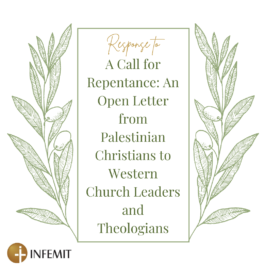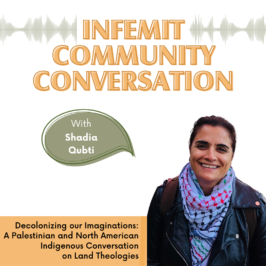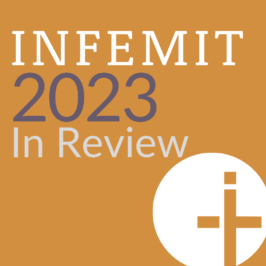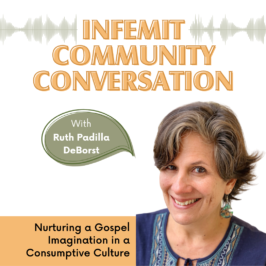The invasion of Europe in Abya Yala (that is, America) caused the largest genocide in the history of mankind. This bloody invasion brought with it a process of colonization, occupation and exploitation of indigenous peoples. This domination did not remain in the past, but instead manifests itself in the colonialities of Eurocentrism, evidenced in homogenization, which continues to cause epistemicide among the indigenous peoples of Abya Yala.
Some think this is merely a historical fact of the past, but no. It is a present reality in the life of the indigenous peoples of Abya Yala. And, from this reality that we have explained, the evangelical church is not exempt.
Beginning with this framework, it is urgent to rethink and ask ourselves: how can reconciliation and transformation of conflict, from indigenous peoples, not remain only a dialogue between Christian theologies and the practices of indigenous spiritualities, but also include the recognition of the historical context and current realities of the peoples who have survived and resisted colonialism’s multiple types of violence up until today?
Why speak about violence in our indigenous communities?
The views regarding indigenous communities often carry a bias that does not allow us to see beyond either romanticization or a vision that constructs a negative understanding of our identity. Therefore, we cannot fall into simple arguments, believing that the term “indigenous” is a category that refers to something savage, aggressive or backward, to resolve conflict. Neither can we simply believe that indigenous communities live in total harmony.
Much of the violence that is carried out within communities are actions that have taken shape throughout our existence, some of them adopting inhumane forms, which were of course, inherited from colonial times. My ancestors used stocks as a punishment, a device of the colonizers used to torture. Fortunately, this has now been abolished. Does it not remain for us to see what violent practices we must continue to bury?
For me, thinking about expressions of peace that we indigenous people manifest has little to do with a signed document. It has to do with fostering a space for recognition and dialogue to examine those practices that threaten the good life and life in community. In this sense, it is up to us as indigenous people to invite an examination of our history and, digging into the beliefs of our ancestry, we can find the foundations for changing the course of our reality, which often resolves difference by canceling out the other.
How is violence understood? Or, what is meant by violence?
Well, I think that in Guatemala, there is always violence specifically in the capital: robbery and kidnapping of many innocent people who are doing their work, who suffer violence at the hands of other people. The other form of violence that I notice in Guatemala among some peoples was in the case of the internal armed conflict, during which acts of cruelty, contempt for life and dignity were manifested. During this conflict, many of our grandparents died, for example, without being involved in the conflict.
How can we understand peace, reconciliation, forgiveness, or the acts or rituals that represent it? A form of reconciliation or forgiveness was what occurred on December 29, 1996, with the signing of the Peace Accord in Guatemala. Another ritual that happened this year 2020 in January was when the president with his team visited San Mateo Ixtatán to launch the government policy to promote compliance with the Peace Accord and development in San Mateo. This Treaty for Peace and Development translates as “Lajti ‘yik junk’olal yet’ yel t’a sat.” For the chujes, peace is translated: “junk’olal.” So “Lajti ‘yik junk’olal” is like an agreement between two parties or between two people.
These painful memories that run through the bodies of our territories not only show the lack of understanding of a holistic gospel; they also violate the heart of identity of the indigenous peoples, since the spirituality of indigenous peoples is fed by our relationship with Nabgwana, that is, the heart of mother and father – the earth. This rupture between the indigenous spirituality and colonial Christianity trying to impose its way of understanding God, what it causes is a lack of understanding of the gospel of Jesus and, therefore, the diminishing of our just coexistence with other living beings that inhabit the earth.
In addition, the proposal of the indigenous peoples invites us to lead a life in harmony in relation to all. Therefore, for these and other reasons, it is important to listen to the voices of indigenous peoples and discover the options for encounter and reconciliation made possible from these memories.
Speaking within the Christian realm, it should be recognized that those negative concepts have marked the churches’ approach, and that language has generated various divisions, in which indigenous peoples have also taken action in defense of their culture. But do these actions reflect our ancestral thinking? Do the dominating, accusatory actions of many churches reflect the gospel message?
I think that, as indigenous people, we must lose our fear of the other, stop seeing the other as a threat, and begin to live the fundamental bases of community from our beliefs and from our cosmogony. The same responsibility falls on outside churches, since they have inadvertently generated conflict – sometimes causing more division than unity.
Both the message that the gospel brings, as well as our ancestral knowledge, extend an invitation to a full life in harmony with others and with the environment. In this lies the belief that we can create an environment of peace.
We appeal to a life in harmony, to the restoration and reconciliation of basic principles of native peoples, in order to speak of justice. I cannot be well if my brother is not well, and my brother represents the entire creation. We believe firmly in the goodness of people, but we also recognize their individual selfishness and greed. Also, since we are subjects who live in a social relationship and interact in community, it is important to seek balance in relationships as a primary objective for the suma qamaña, which is based on the principle of reciprocity, respecting the other. It is our hope not to give up, since the Jacha Uru is coming.
We cannot speak of a theology of reconciliation from the indigenous reality or decolonization without concrete actions. Decolonization is not merely an academic or intellectual act, but is based on concrete actions.
As my Gunadule grandmothers and grandfathers would say in their songs sung from the hammock, in the heart-journey, we recognize this path of reconciliation, we need to be healed, and we can be healed through lament, through our pain, through the recognition of the other, but also through the gospel of Jesus.
The book of Ephesians sets forward an intercultural church that includes women, gentiles and slaves, within a context of homogenization and globalization in Asia Minor, in which the prevailing powers of evil wanted to oppress the other. The gospel of Jesus offers us an intercultural view, in which we all have space for dialogue, but also a political-ecclesial proposal that helps us recognize indigenous theologies and the indigenous face of God as a way of reconciliation – an encounter in which we need listen to the voices of the indigenous peoples of Abya Yala as a pedagogical, methodological, but, above all, theological proposal that arises from the heart of the great mother and the great father. That is, from the heart of God.
Having heard a little about the history, the memories offered by our sisters and brothers, we want to leave you these questions to for the journey of reconciliation ahead, reflecting and “heartening” together with the indigenous peoples of Abya Yala:
- What does it mean today to have acts, agreements or rituals of reconciliation if, in the end, the indigenous peoples with whom these agreements are made continue to be killed or neglected?
- How do we speak in theological terms about the relationship of our indigenous peoples with the land, while the original caretakers of this continent are displaced from the land, and exploitative forces practice measures so severe that they produce environmental degradation, economic displacement, and instability, leading to social disintegration?
- How can we reconcile Western Christianity with its alienation from the Earth?
- In what way can we work on recognizing ourselves as part of the community of all living beings, in which we all depend on one another? And, therefore, the destruction and impact on the Earth affects us all, particularly the indigenous peoples.
For the church to truly deal with the history and struggle of indigenous peoples to survive and preserve their cultural integrity in the face of colonial invasion and oppression, we have to start listening to the memories that are present in the narratives of indigenous peoples. In this way, we draw near to listen, as merely a first step after repentance, because, when we listen, we discover that the same history continues today in the lives of indigenous peoples.
Our acts of reconciliation must be shaped by the recognition of the historical realities and the laws and practices that have created the environment in which indigenous peoples live today. They resist the historical realities that continue to shape and control their lives in various ways, but we recognize that the Ruah, the spirit of God, blows within Abya Yala, bringing new forms of liberation.






Leave a Reply